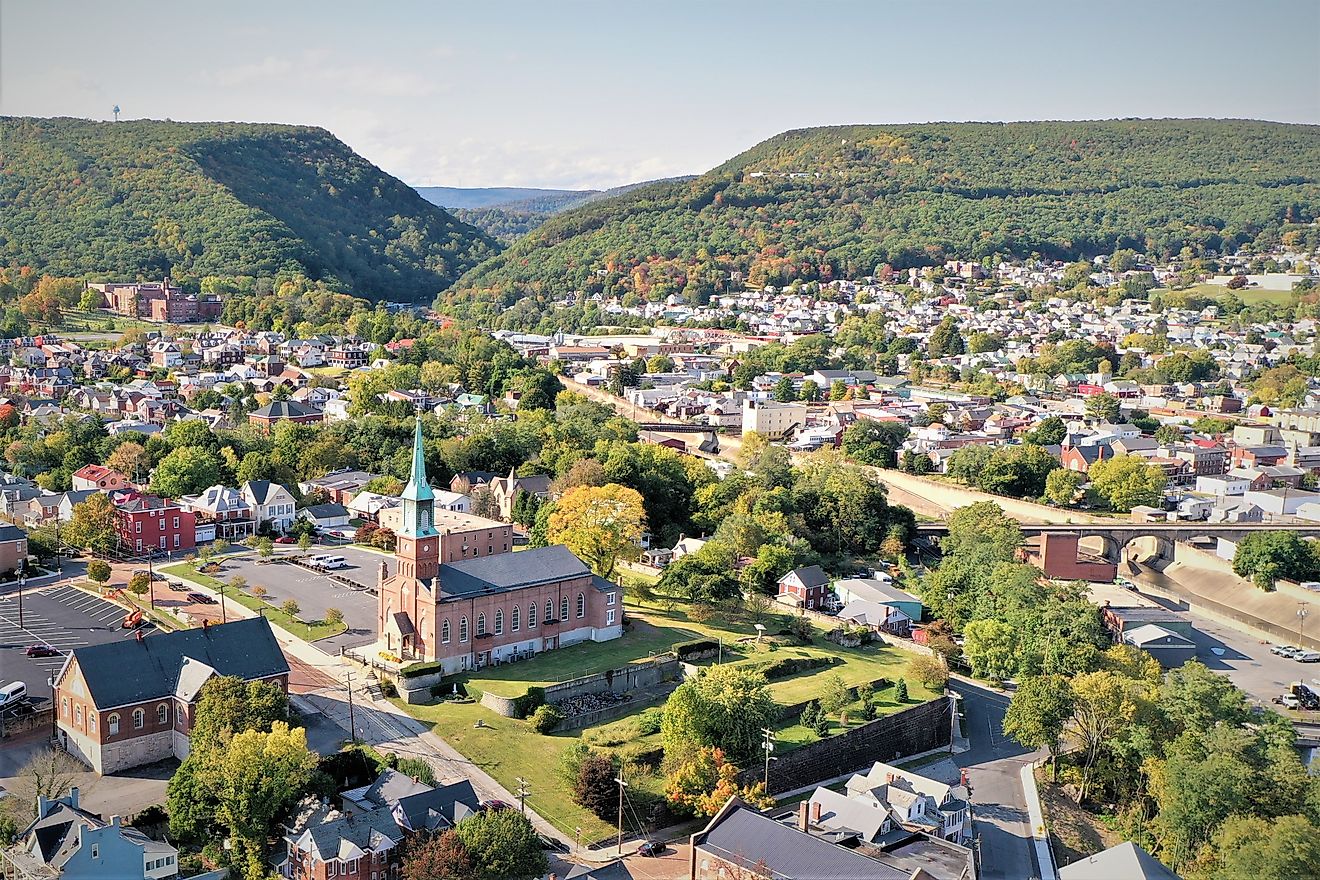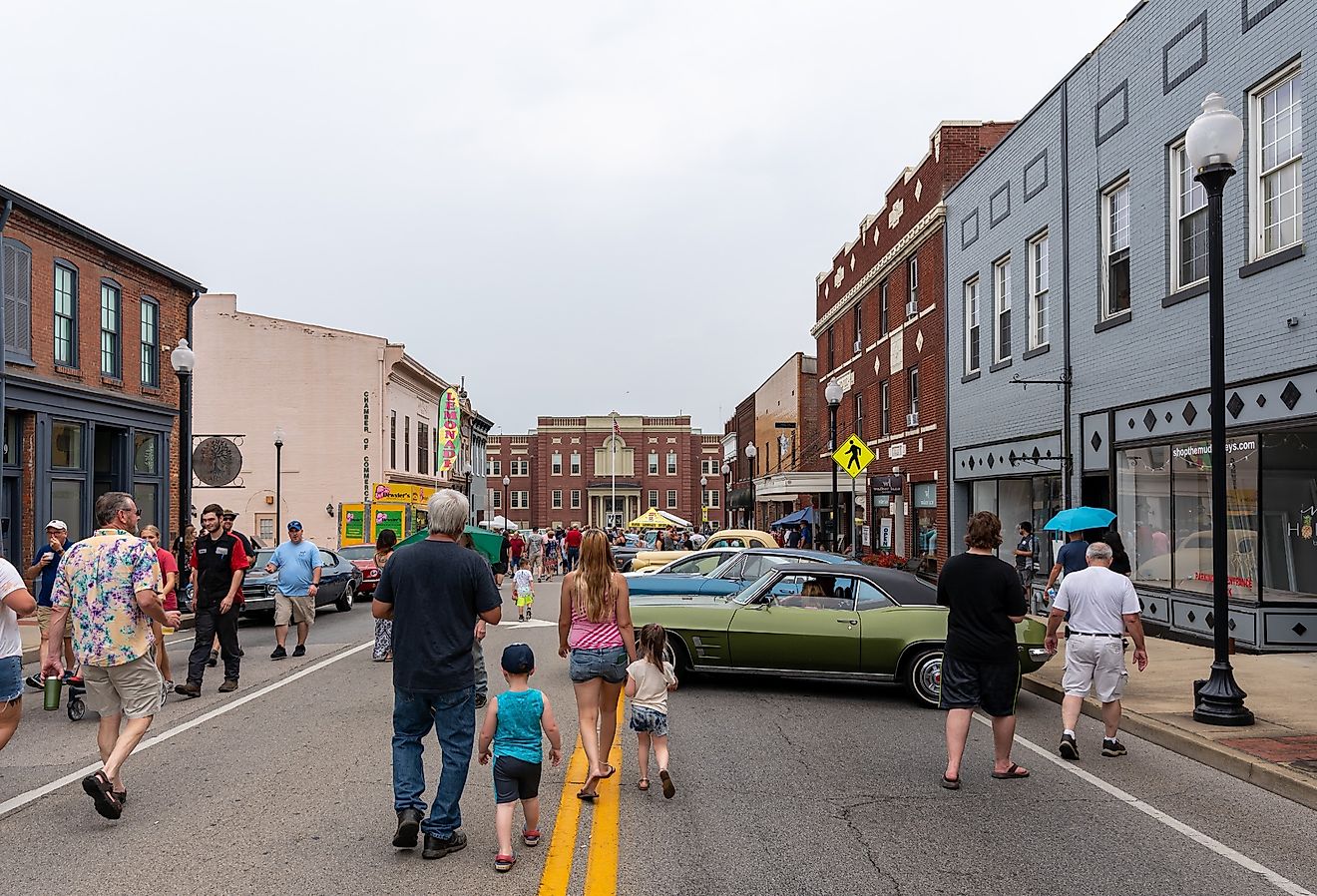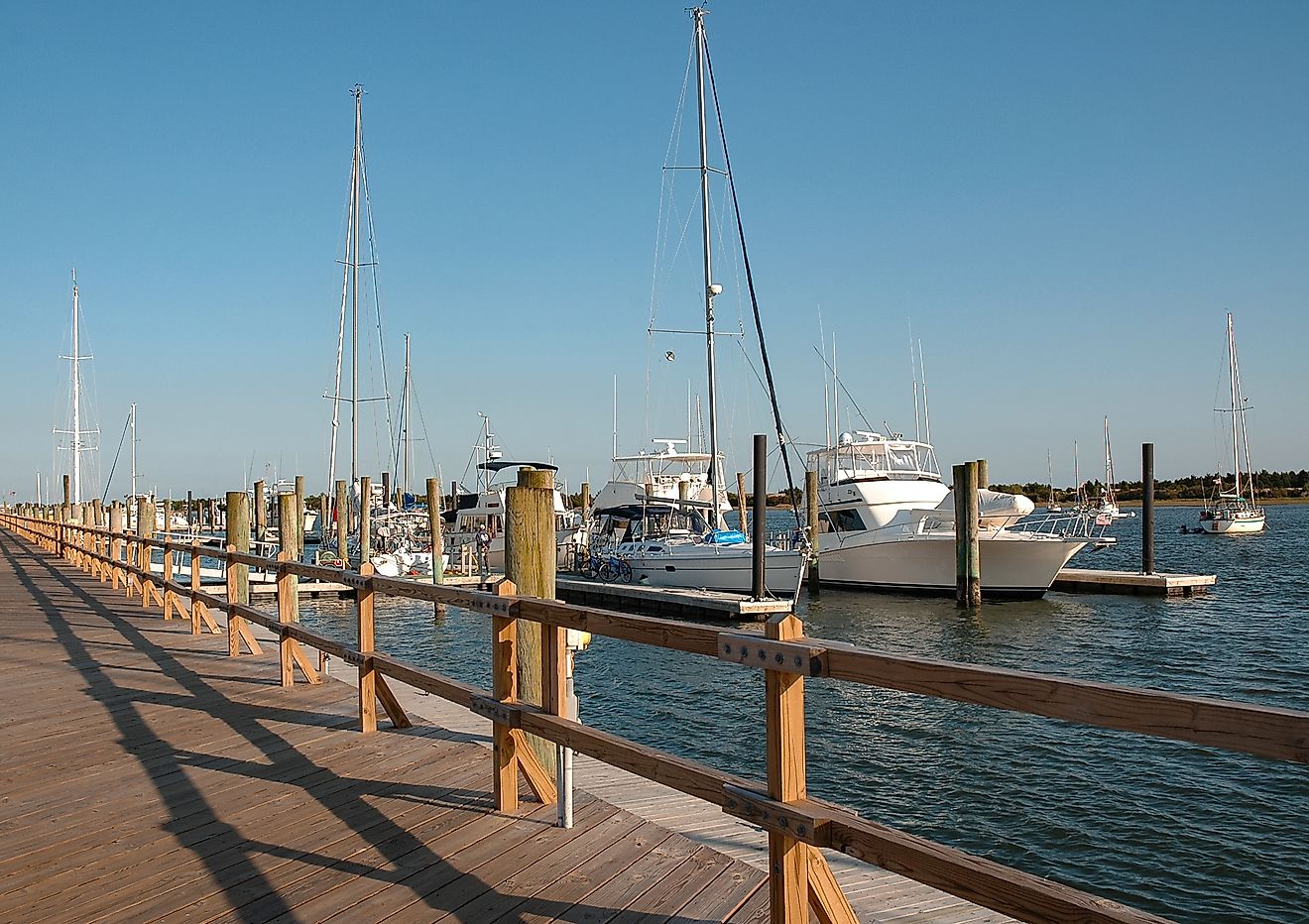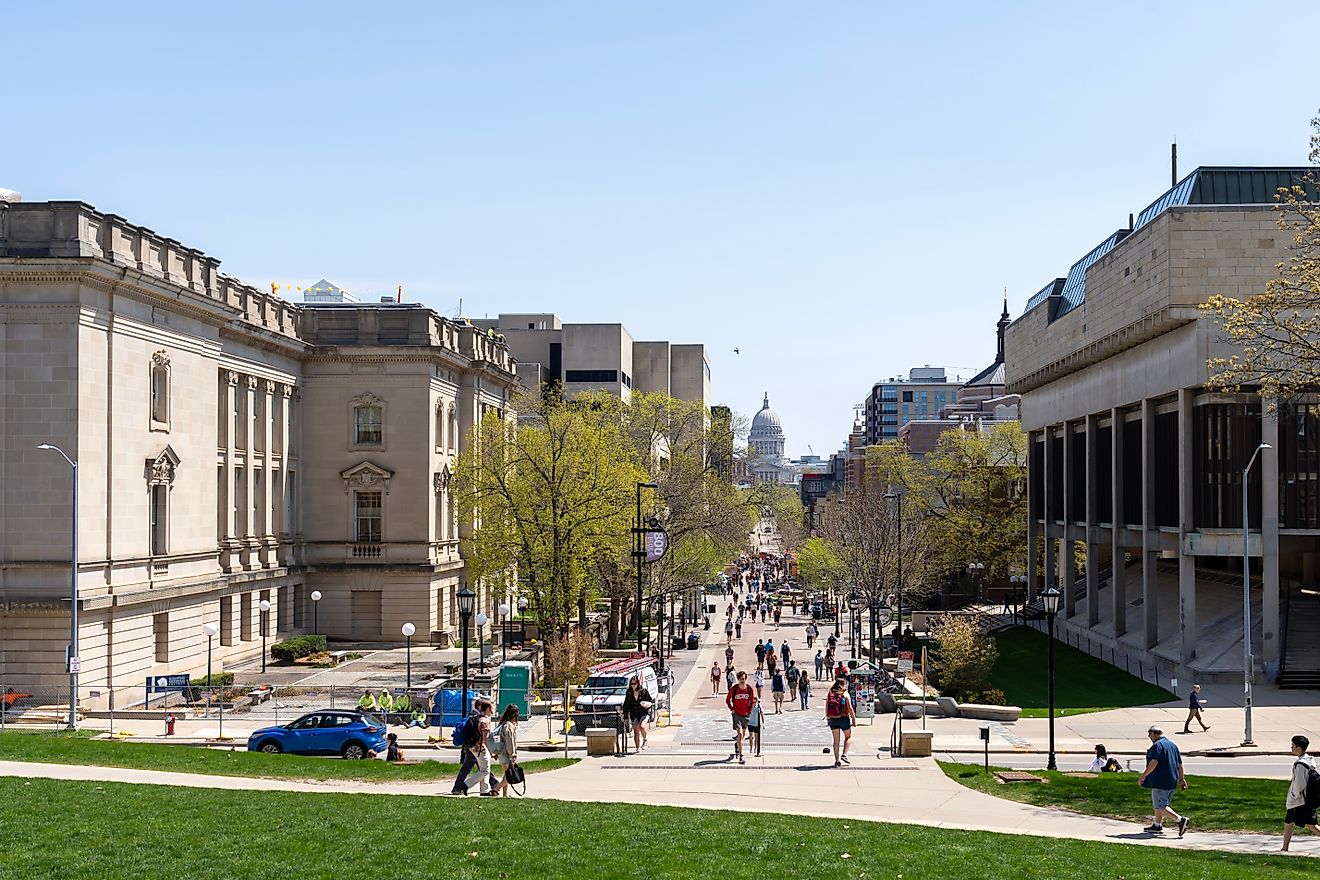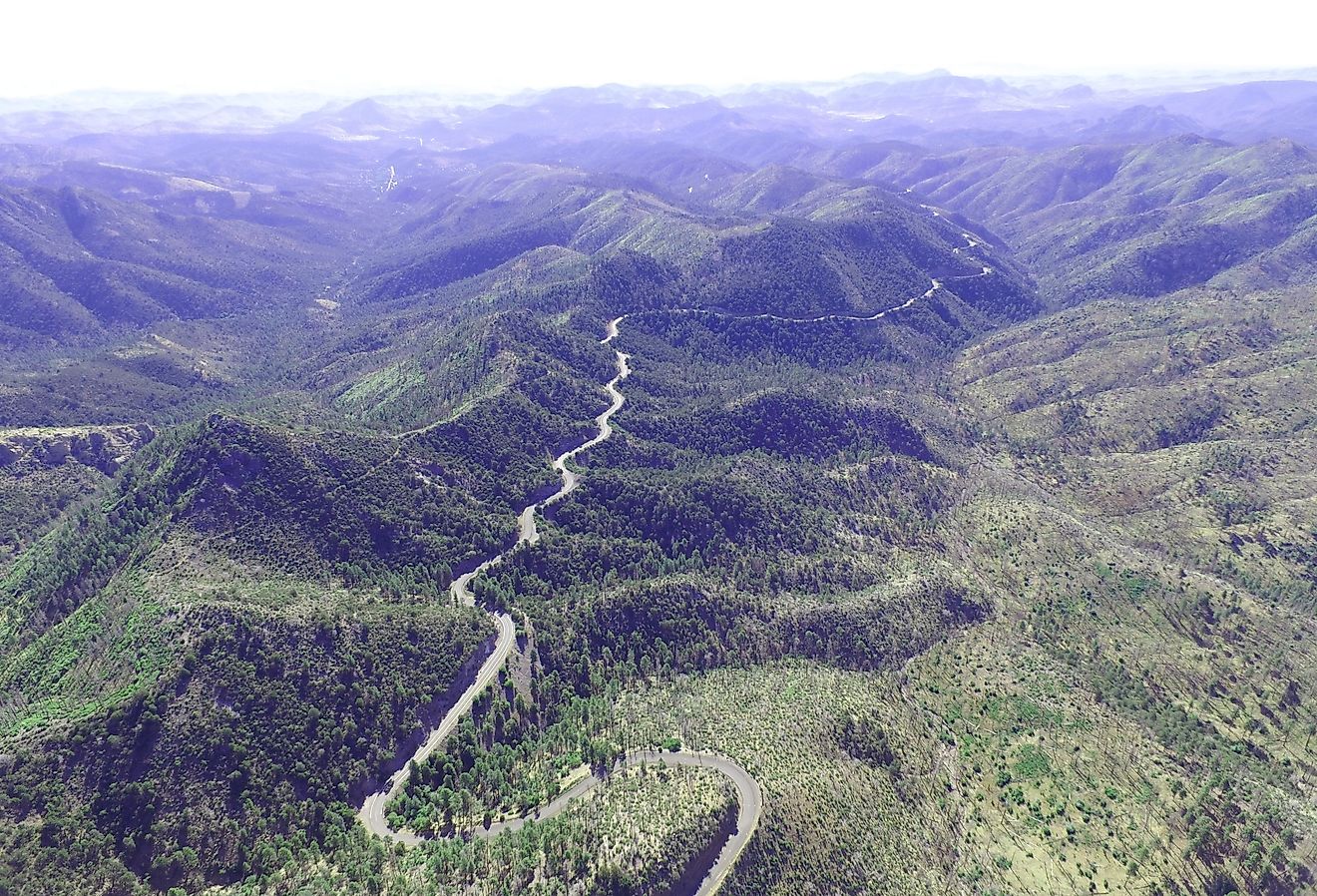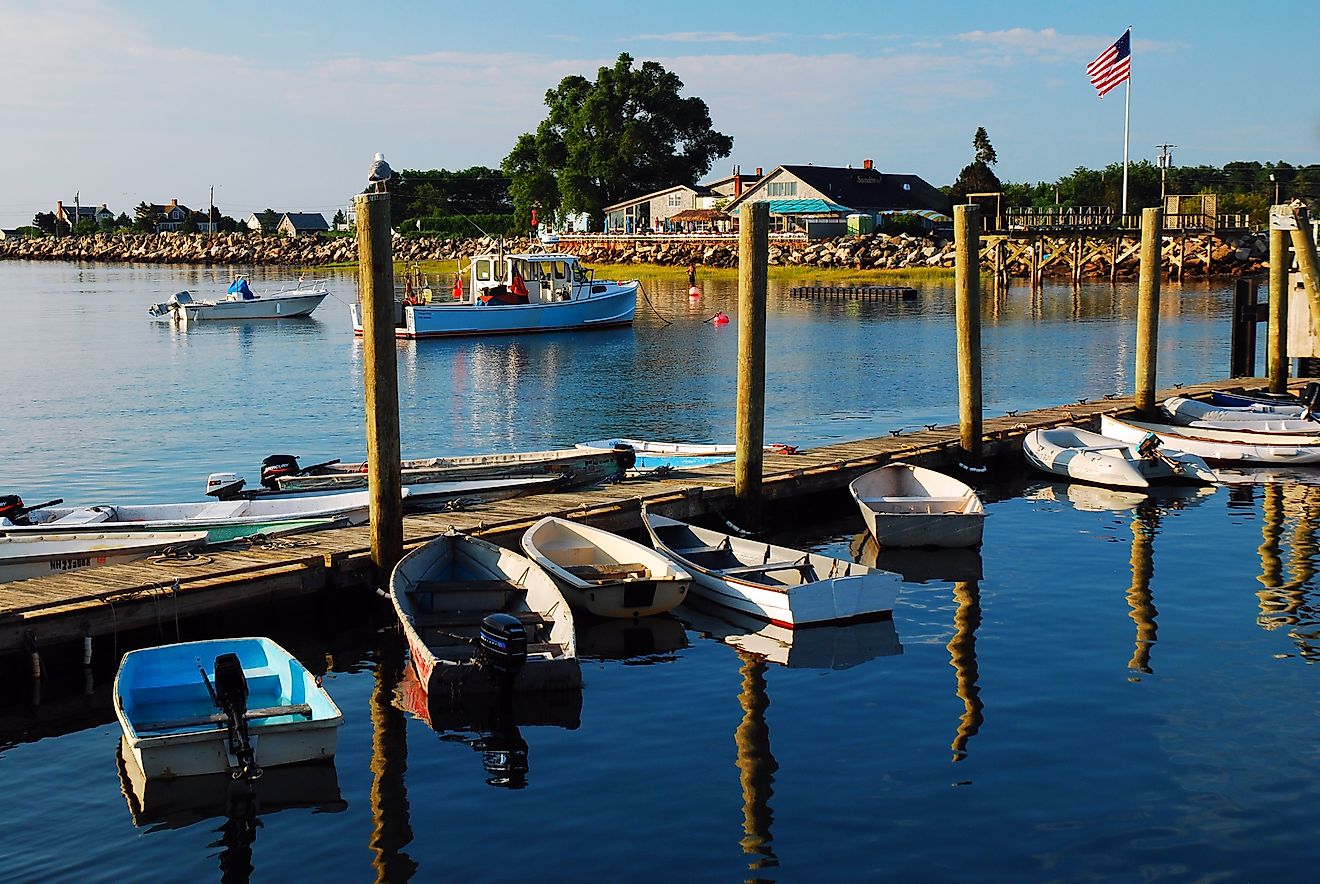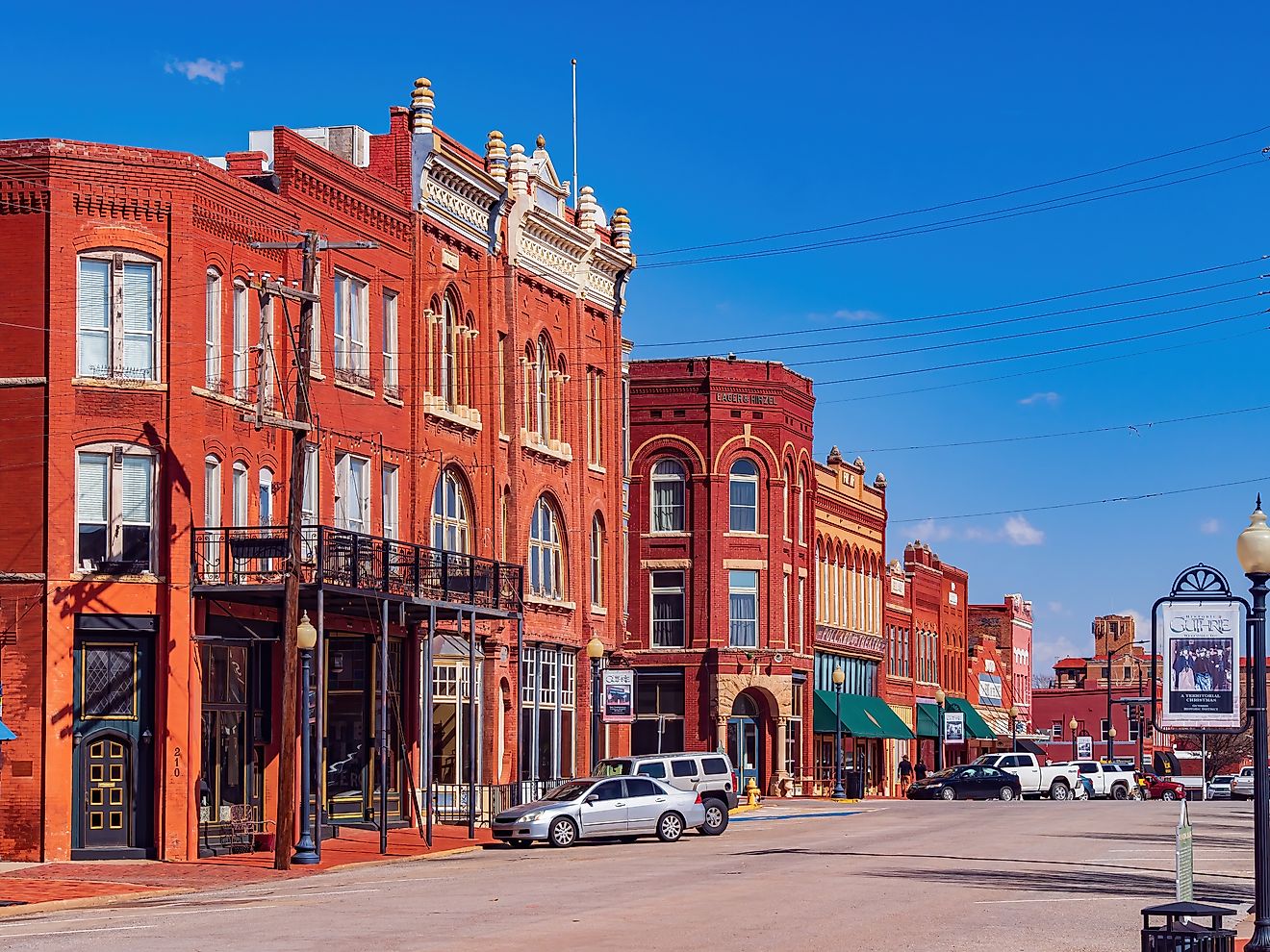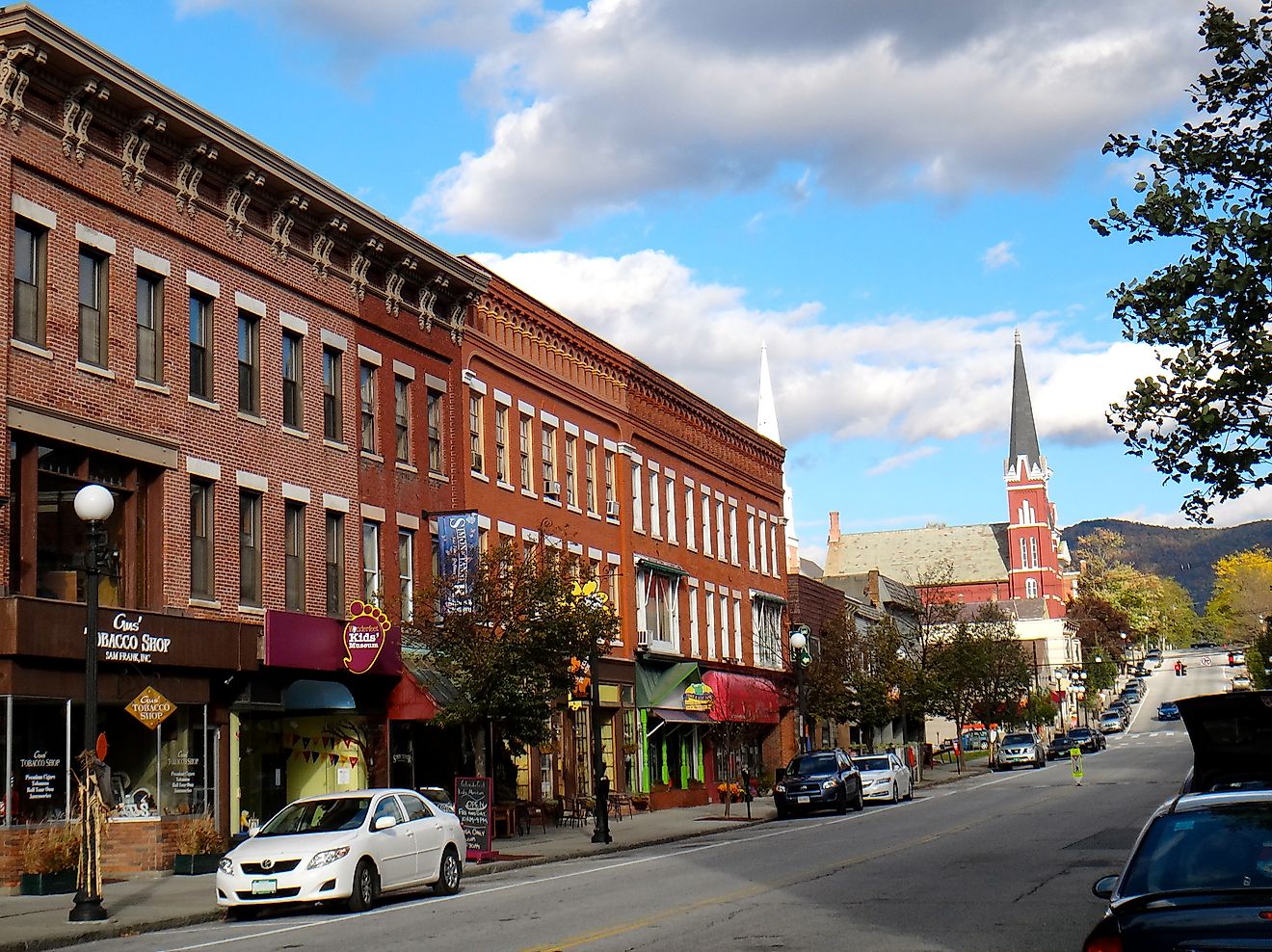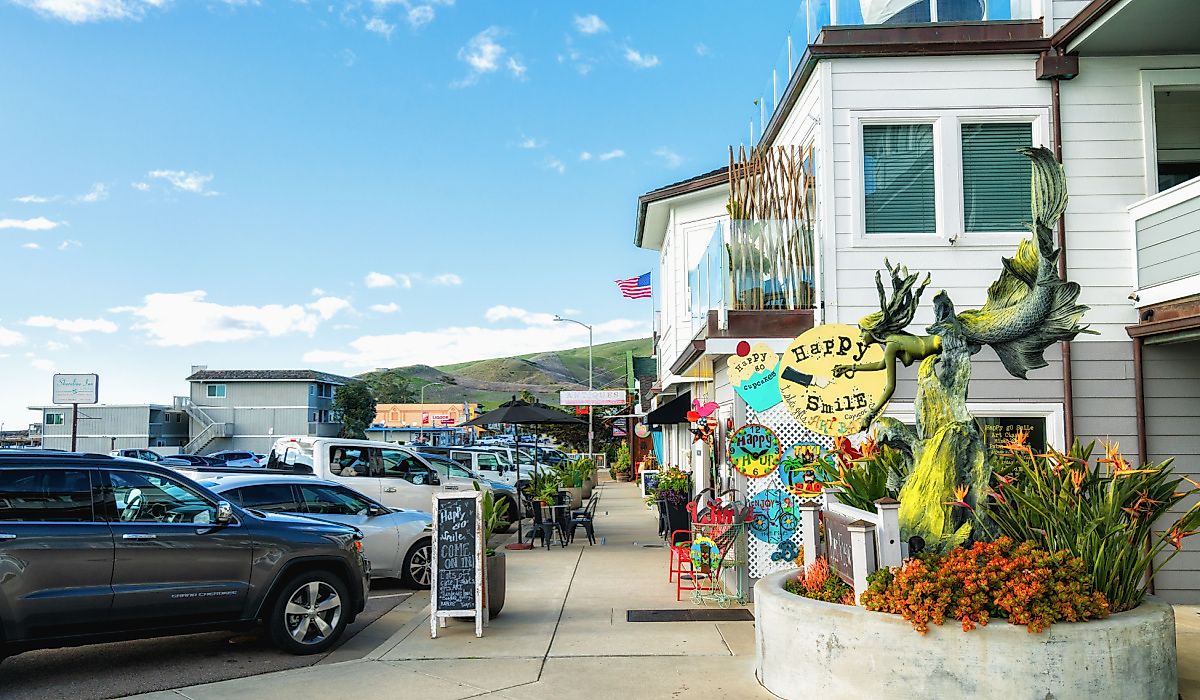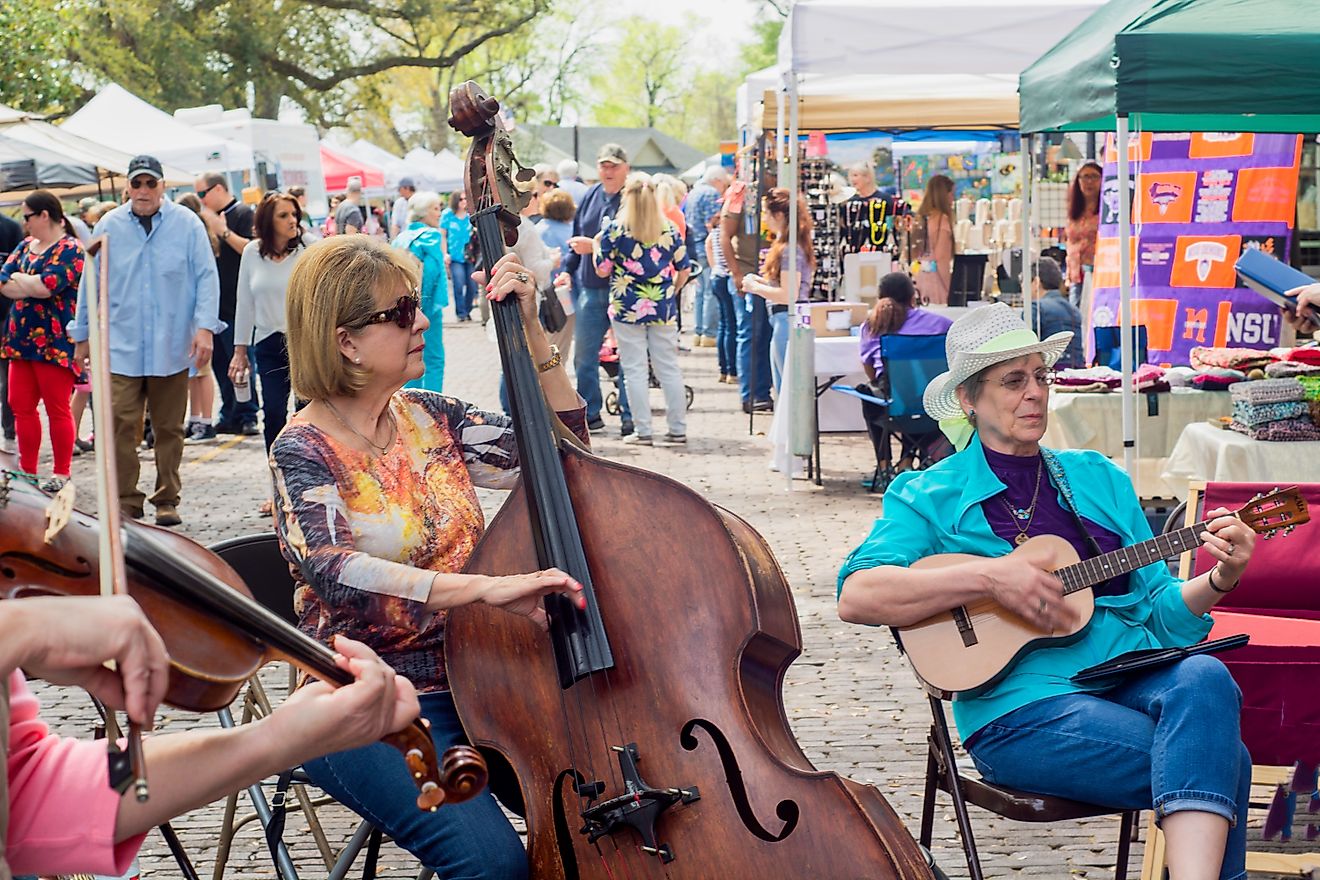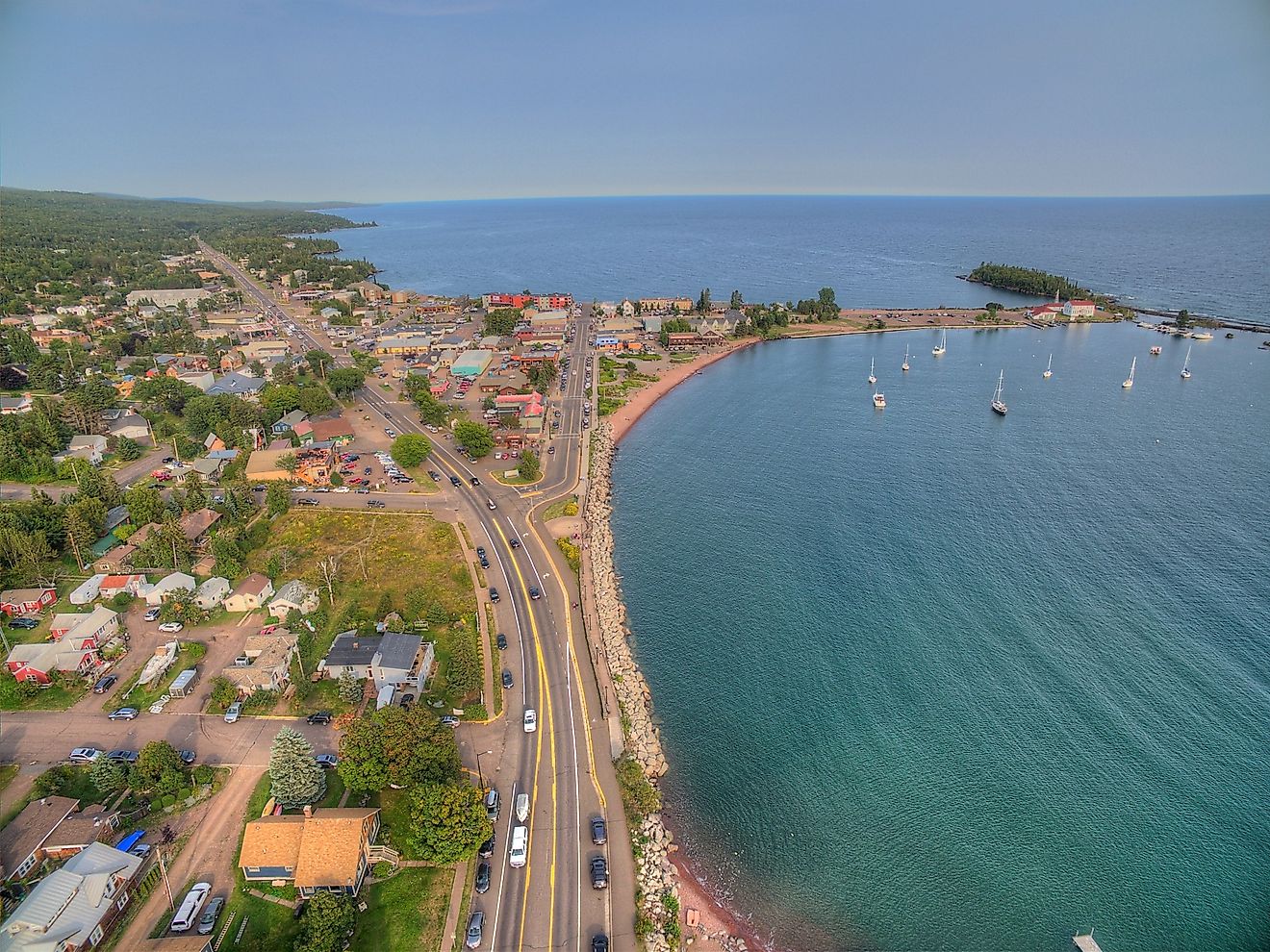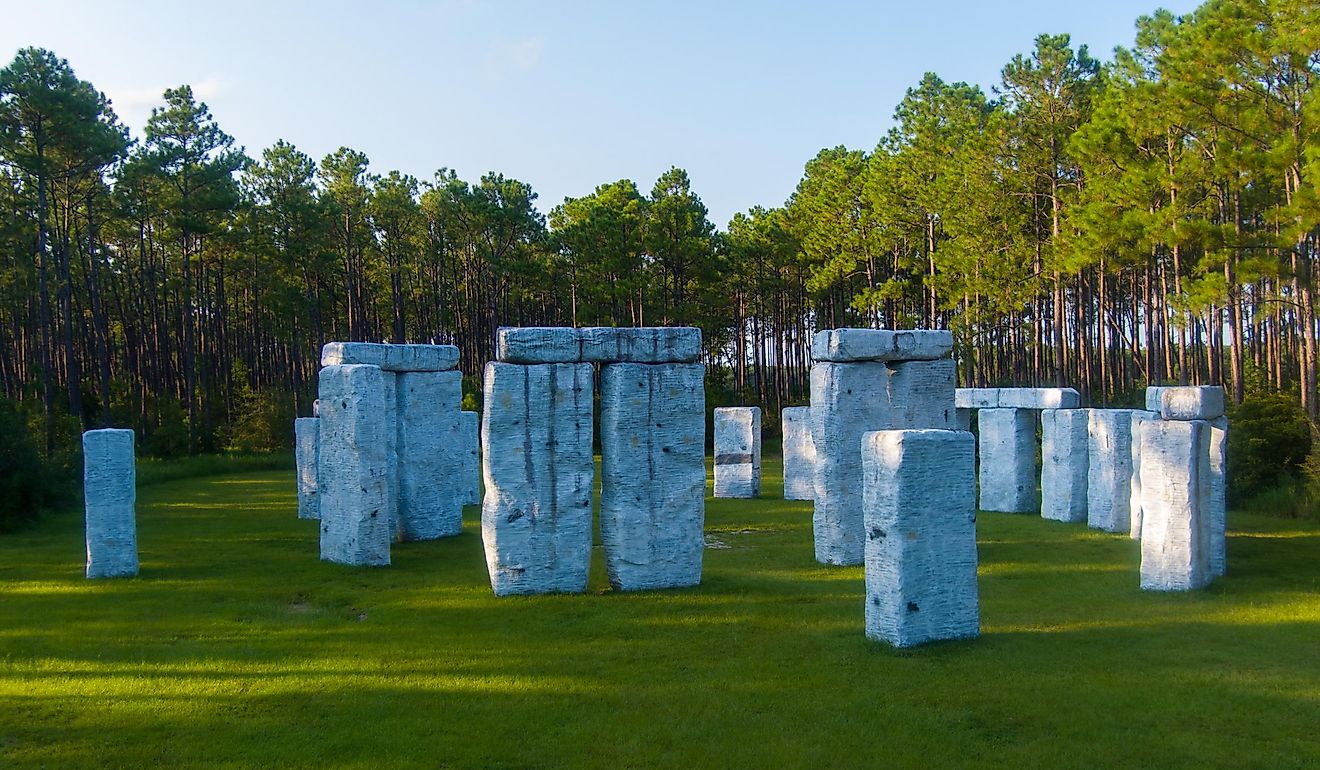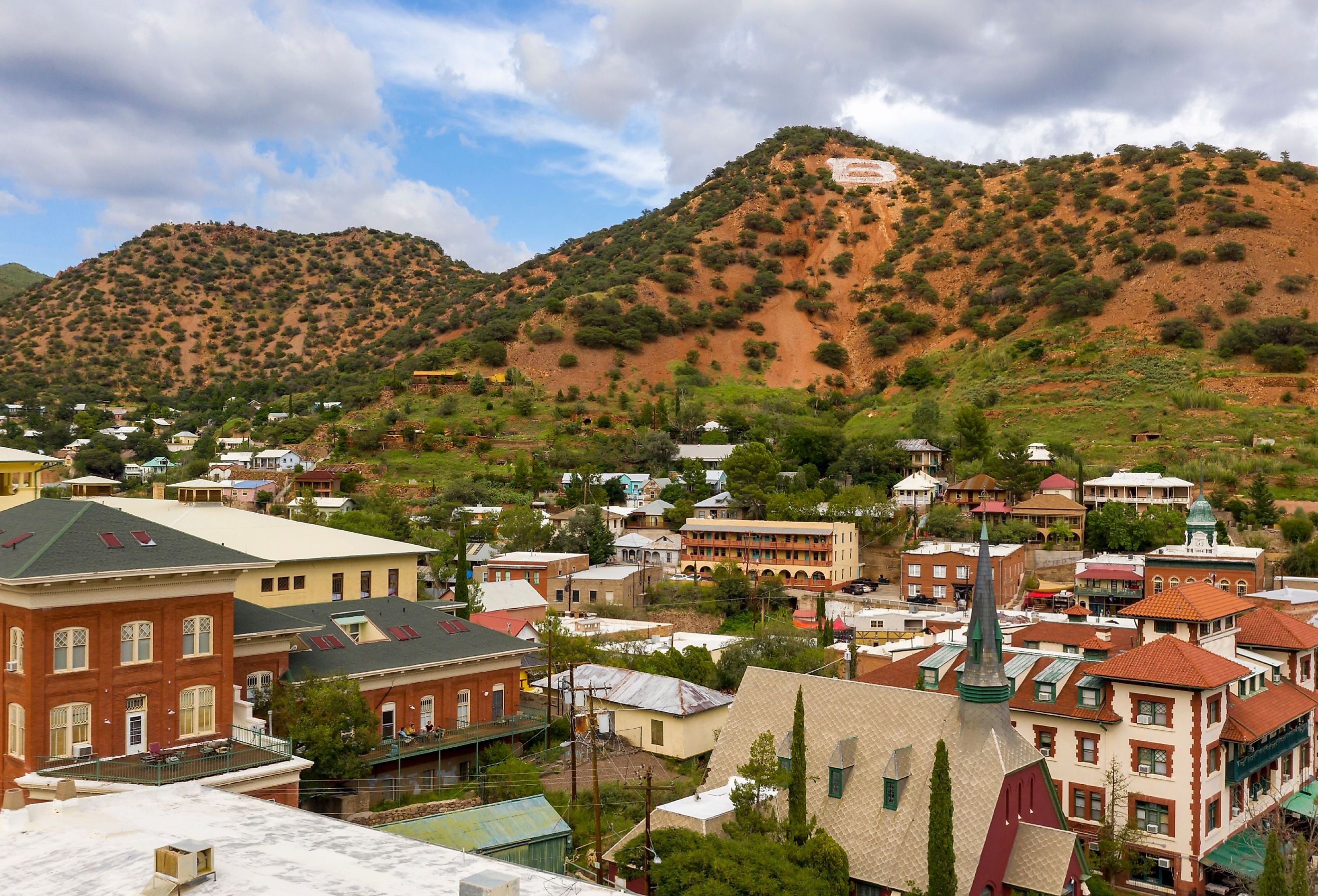
11 Prettiest Small Towns In Arizona
Arizona’s small towns often pack the most charm, offering breathtaking scenery, historic sites, and a slower pace of life. These destinations make perfect scenic road trip stops, weekend getaways, or just a chance to explore hidden gems. From copper mining roots in Bisbee to artistic works in Sedona and Jerome, these towns weave together the state’s rich history with its stunning landscapes. So buckle up; your Arizona adventure is about to get a lot more colorful!
Sedona
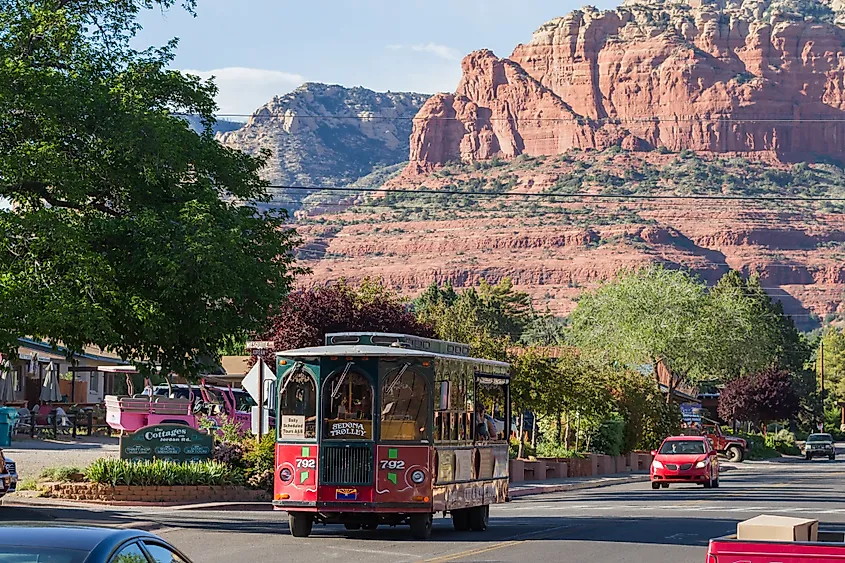
Sedona is located in northern Arizona, surrounded by layered red rock formations that rise sharply from the desert floor. These formations give the area a unique appearance and provide the backdrop for outdoor activities year-round.
The Cathedral Rock Trail, part of the Coconino National Forest, offers a short but steep hike to one of the area’s most recognizable viewpoints. Other trails like Bell Rock and Boynton Canyon appeal to hikers and photographers alike. Oak Creek cuts through the area and supplies several shaded spots for picnicking, fishing, and swimming, especially at Slide Rock State Park.
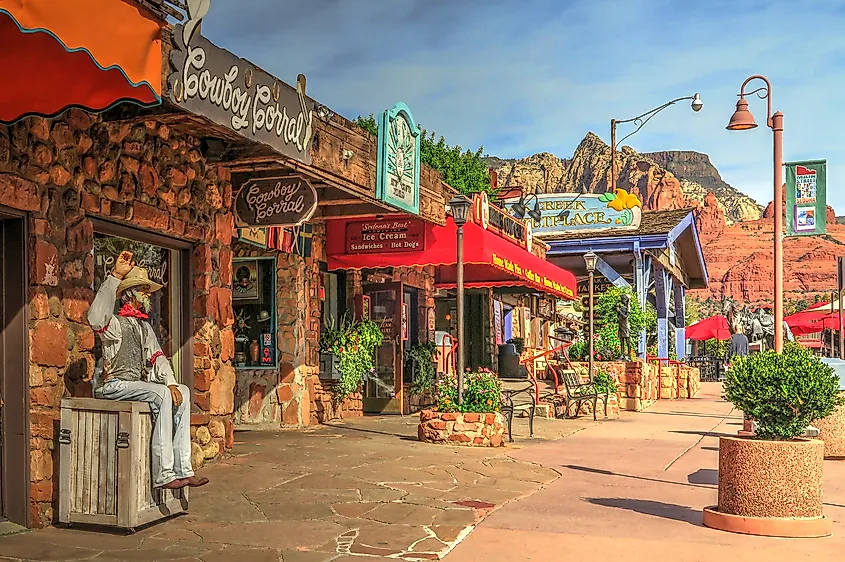
In town, the Tlaquepaque Arts and Shopping Village includes galleries, studios, and restaurants, and the design is modeled after a Mexican village. The Sedona Arts Center supports local and regional artists with exhibits and public programs. With its mix of desert landscapes, public art, and walkable spaces, Sedona combines outdoor access with cultural activity in a way that feels distinct from larger Arizona cities.
Jerome
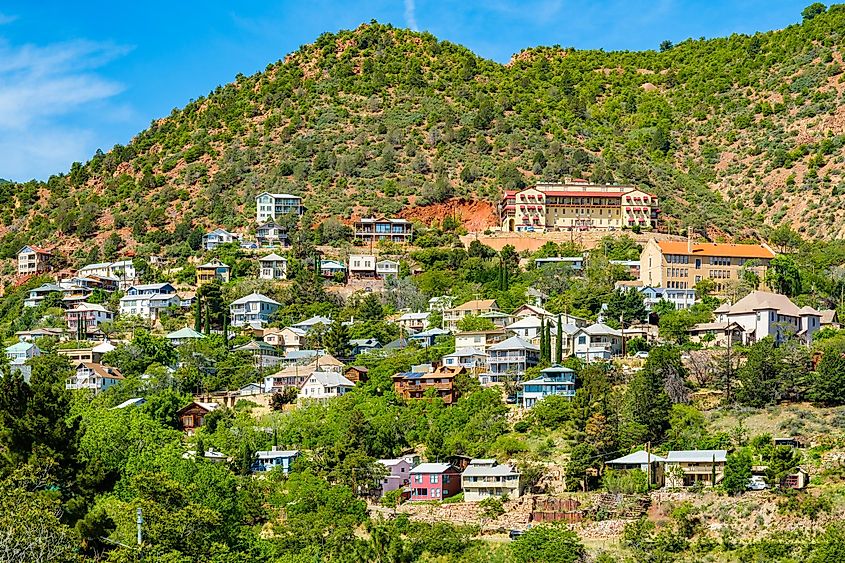
Jerome sits on Cleopatra Hill, overlooking the Verde Valley, where it developed during the early 20th century as a copper mining town. After the mines closed, the population declined, but the town later drew artists, entrepreneurs, and preservationists.
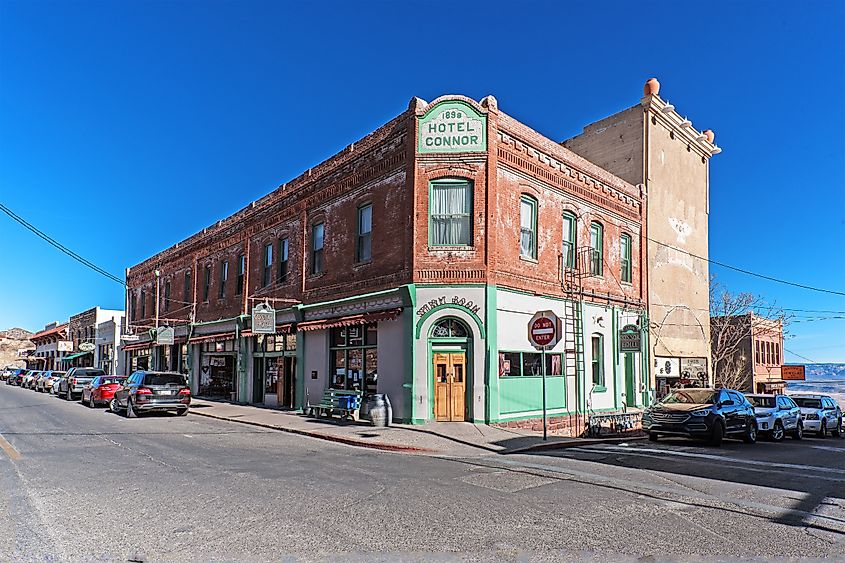
Today, its narrow, winding streets hold original buildings from the mining era, many of which now house galleries, shops, and cafés. The Jerome State Historic Park, located in the Douglas Mansion, offers exhibits on the town’s industrial past, while the Mine Museum presents tools and stories from its early days. Art continues to shape Jerome’s identity through venues such as the Raku Gallery and the Jerome Artists Cooperative Gallery, both located in restored historic structures.
Hiking trails in the nearby Woodchute Wilderness lead through ponderosa forests and present high-elevation views across central Arizona. The Jerome Grand Hotel, once a hospital, attracts visitors interested in both architecture and local lore. The town’s steady transformation shows how preservation and creativity can coexist.
Bisbee
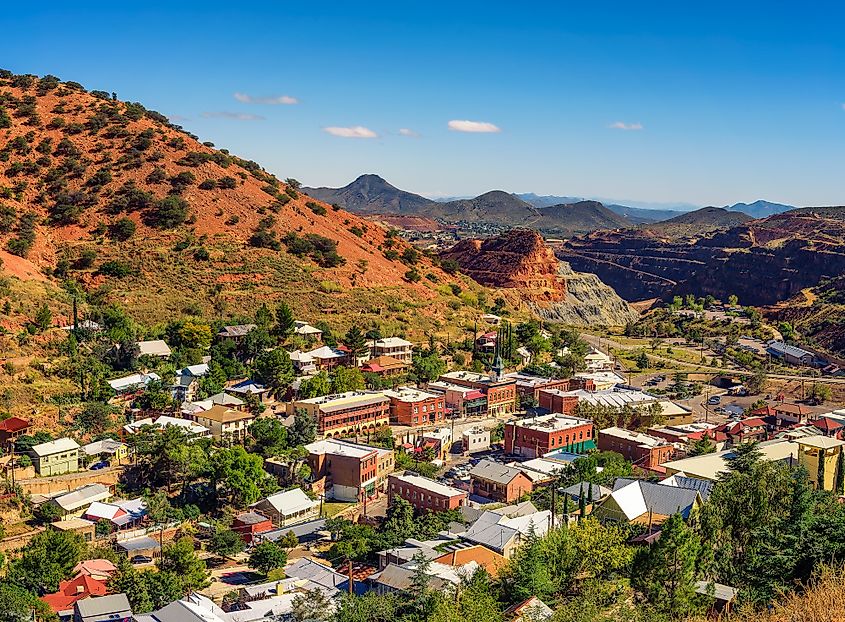
Bisbee is located in southeastern Arizona, set within the Mule Mountains near the Mexico border. Originally a major copper hub, the town experienced rapid growth in the late 1800s, leaving behind a network of hillside neighborhoods, brick storefronts, and steep staircases. Much of its mining-era architecture remains, including the Bisbee Mining and Historical Museum and the Copper Queen Hotel, both of which reflect the area’s industrial roots. The Lavender Pit, an open-pit mine visible from town, shows the scale of former operations.
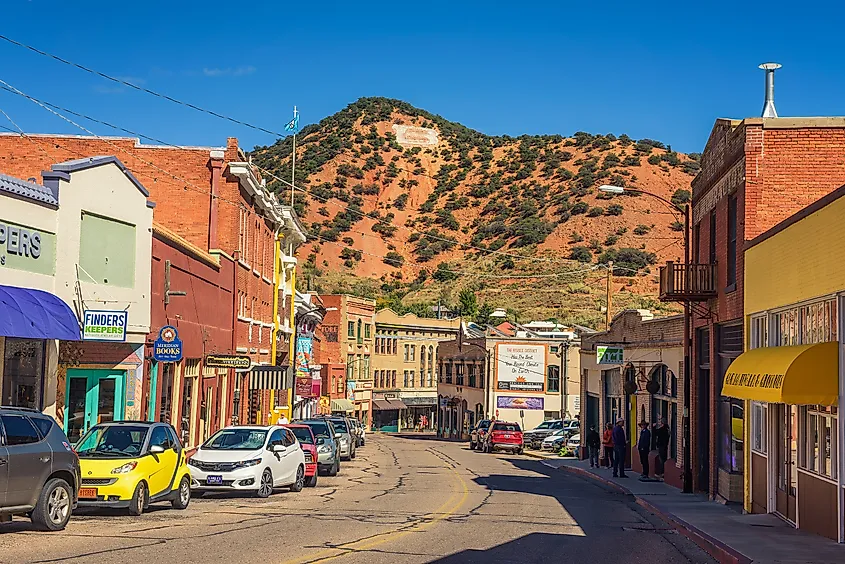
Today, Bisbee supports a strong arts culture. Galleries such as Belleza Fine Art and Sam Poe Gallery display local and regional work, while shops along Main Street offer handmade jewelry, textiles, and antiques. Mule Pass Trail, just west of town, gives hikers access to views and wildlife in the surrounding hills.
Prescott
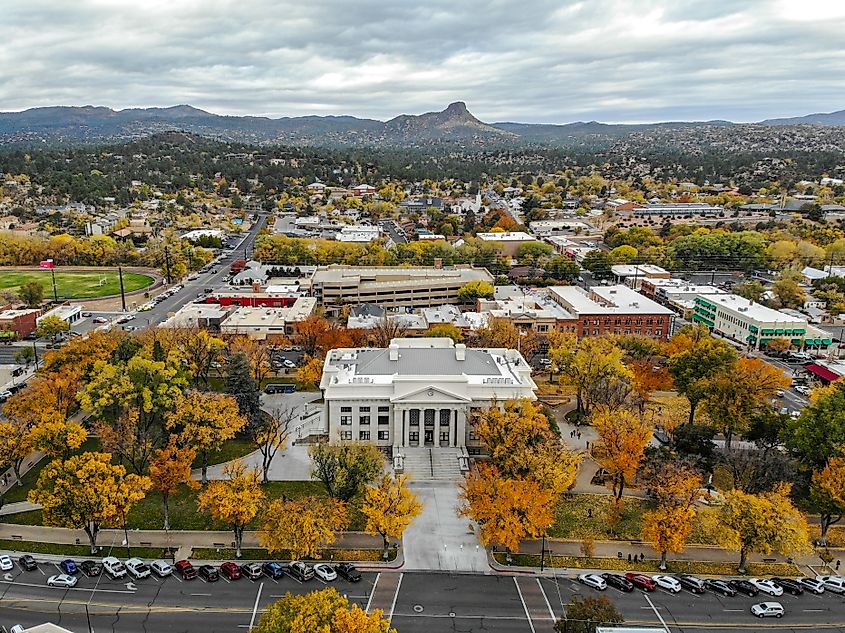
Prescott is in central Arizona and is surrounded by the expansive Prescott National Forest. It's set in the Bradshaw Mountains, which support mild temperatures, tall pines, and a wide range of outdoor activities.
The town’s network of trails includes the Constellation Trail, which weaves through granite outcrops and open hillsides, as well as routes near Watson Lake and Lynx Lake, both popular for fishing, kayaking, and birdwatching.
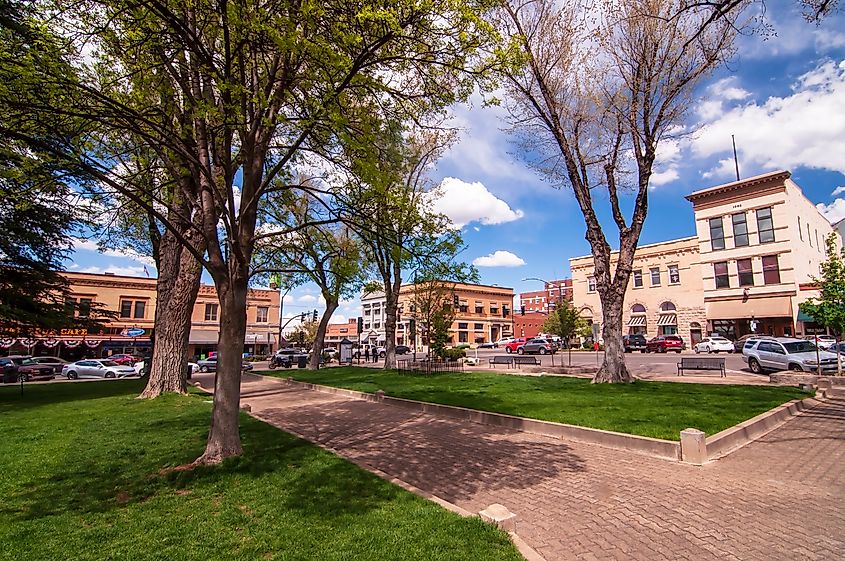
Downtown Prescott centers on Courthouse Plaza, a large shaded square ringed with preserved buildings. Whiskey Row, once a hotspot for saloons, now contains restaurants, shops, and art galleries in historic storefronts. The Sharlot Hall Museum, housed in a restored governor’s mansion, offers insight into local frontier history. Victorian homes line the residential streets, and public landscaping changes with the seasons. Events such as Prescott Frontier Days and the Christmas Courthouse Lighting continue to bring the community together.
Cottonwood
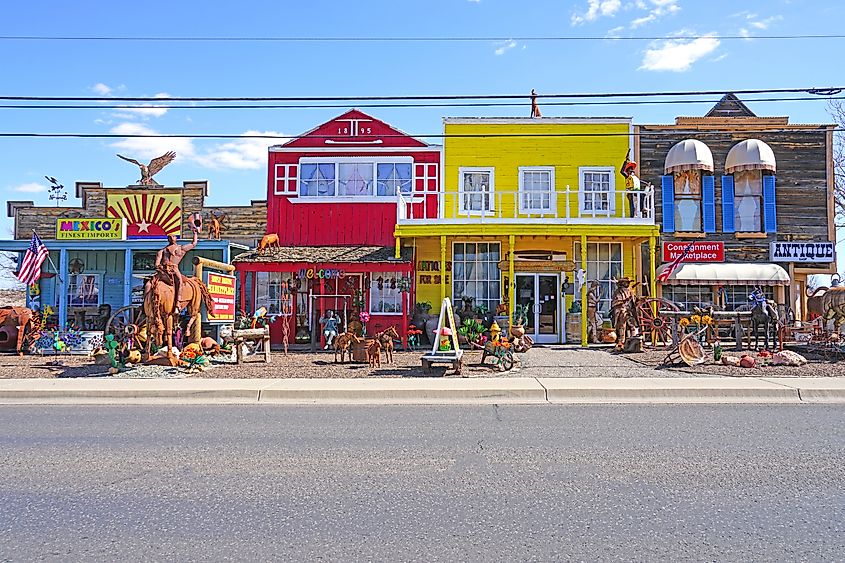
Cottonwood is in central Arizona along the Verde River, where natural access, heritage, and small-town life come together. Old Town Cottonwood preserves 1920s-era architecture, with a walkable stretch of restored buildings housing restaurants, antique stores, galleries, and wine tasting rooms.
Local wineries such as Pillsbury Wine Company and Burning Tree Cellars contribute to the town’s growing reputation in viticulture. Just outside town, Dead Horse Ranch State Park offers trails along the Verde River, lagoons for birdwatching, and shaded picnic sites. Visitors can also board the Verde Canyon Railroad, which runs through high desert scenery and the Sycamore Canyon Wilderness. Along the route, red rock walls and riparian zones contrast with the dry landscape.
Cottonwood hosts seasonal markets, art walks, and festivals that celebrate its regional character. Its location near Sedona, Jerome, and Camp Verde adds to its appeal as a central base.
Safford
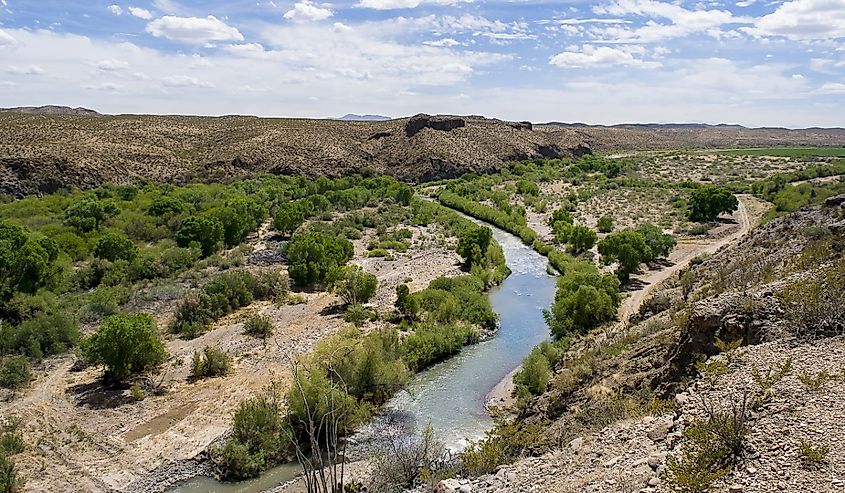
Situated in the Gila Valley of southeastern Arizona, Safford is a charming town known for its agricultural roots and picturesque mountain backdrop. Surrounded by the Pinaleño Mountains, it offers ample outdoor activities such as hiking, camping, and birdwatching. The Mount Graham area, home to the Pinaleño Mountain Range, features trails that lead to spectacular viewpoints, including the Riggs Flat Lake Trail.
The town itself has a quaint historic district with preserved mid-20th-century buildings, local shops, and family-owned restaurants. The Eastern Arizona Museum showcases the region's rich mining and agricultural past, giving visitors insight into its development. Seasonal festivals like the Safford Heritage Days celebrate local history and traditions, reinforcing the town’s close-knit community spirit.
Safford’s location provides easy access to nearby areas like Thatcher and the Aravaipa Canyon Wilderness, where visitors can enjoy serene river hikes and diverse wildlife.
Globe
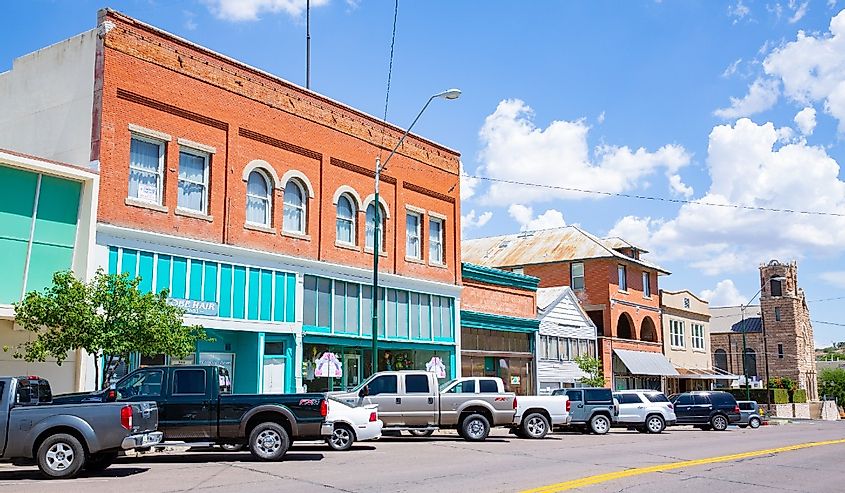
History runs deep in Globe, where copper mining shaped both the layout and identity of this central Arizona town. Early 20th-century buildings, such as the Gila County Courthouse and the Apache Hotel, remain intact, offering a direct link to the boom years. The Gila County Historical Museum presents additional insight into the lives of miners, ranchers, and merchants who helped develop the region.
Set against the Pinal Mountains, Globe provides access to trails leading through the Tonto National Forest, including the ascent to Pinal Peak, where hikers encounter varied desert and forest terrain. Roosevelt Lake also lies nearby for fishing, boating, and wildlife viewing. Downtown, antique stores, galleries, and cafés support a modest but steady flow of local commerce. Events like the Historic Home and Building Tour invite visitors to explore preserved architecture and the stories behind it.
Camp Verde
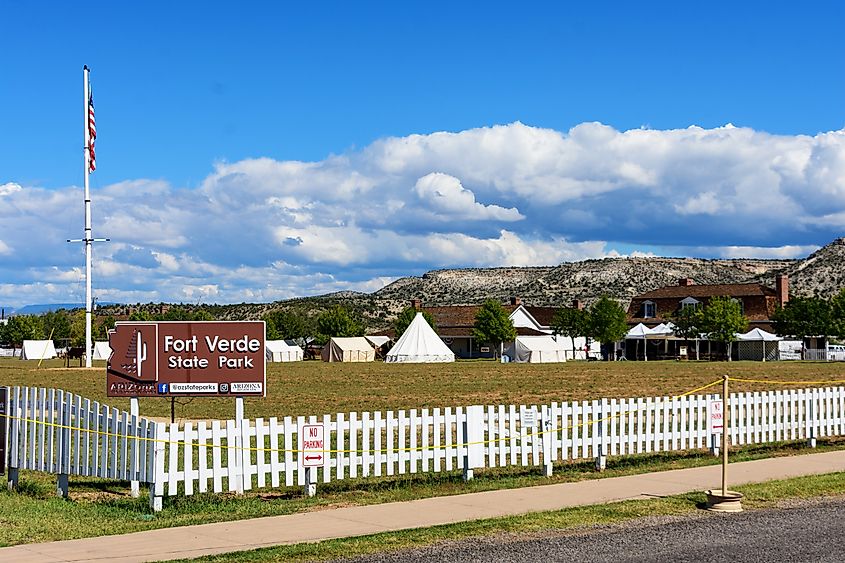
At the convergence of the Verde River and numerous hiking trails, Camp Verde offers a blend of natural beauty and historic interest. Known for its proximity to the Montezuma Castle National Monument, the town draws visitors to explore the well-preserved cliff dwellings of the Sinagua people.
The Tuzigoot National Monument, located nearby, also provides insight into the area's ancient history with its ruins perched atop a hill. Camp Verde's Verde Valley, flanked by the Black Hills to the north and the Mingus Mountains to the south, presents ample outdoor opportunities.
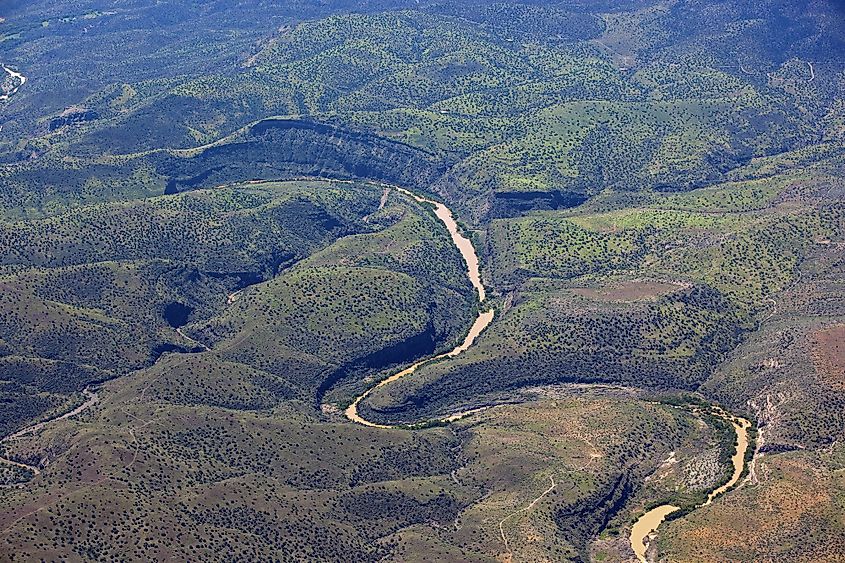
The town’s low-key atmosphere extends to the local vineyards, such as the Verde Valley Wine Trail, where visitors can enjoy tastings. For those who enjoy wildlife, the nearby Verde River Greenway is home to diverse species and is perfect for birdwatching.
Willcox
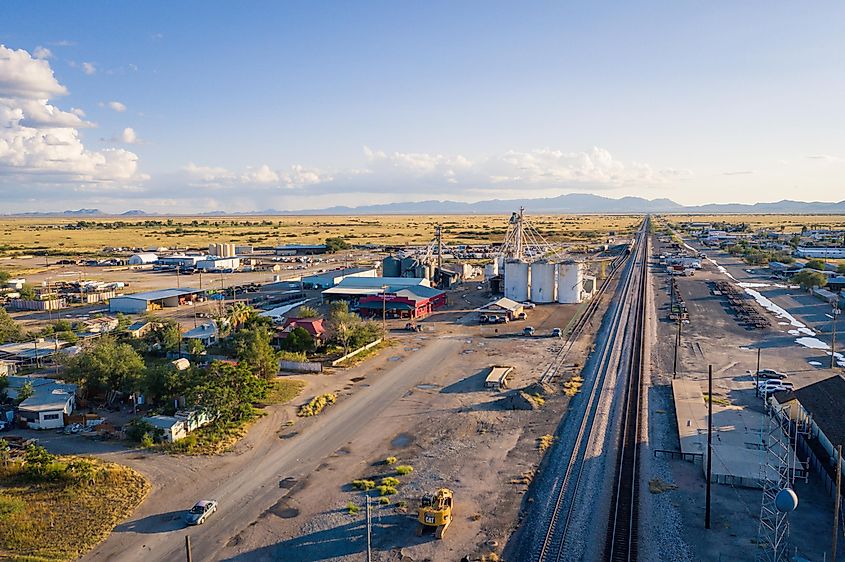
Willcox rests in southeastern Arizona and boasts both agricultural roots with high desert landscapes. Its economy has long revolved around cattle ranching and crop production, but the area is now recognized for its emerging wine industry. Vineyards such as Coronado Vineyards and Carlson Creek grow at elevation, benefiting from cool nights and mineral-rich soil.
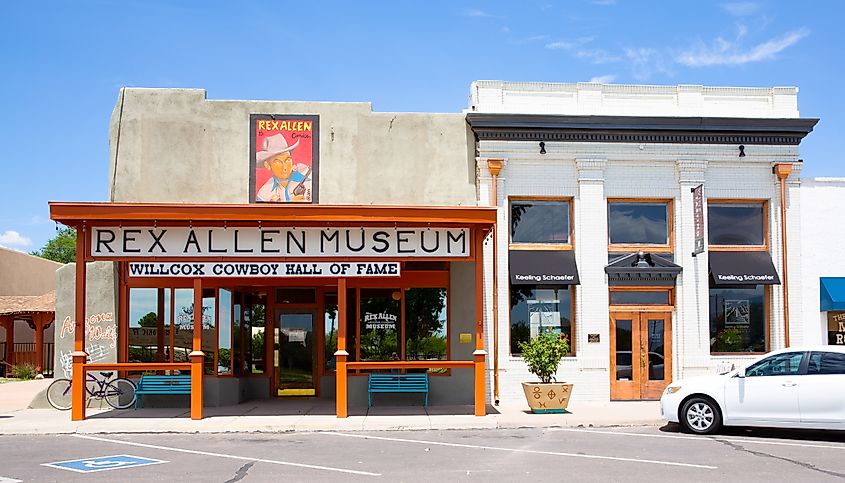
The downtown area contains early 20th-century storefronts, a restored theater, and the Rex Allen Arizona Cowboy Museum, which honors the local musician and film star. A short drive from town, Chiricahua National Monument offers hiking through volcanic rock spires and forested canyons, while birders frequent Willcox Playa, a seasonal lakebed and migratory stopover for thousands of sandhill cranes.
Annual events, including the Willcox Wine Festival and Rex Allen Days, connect residents and visitors through music, food, and regional traditions.
Clarkdale
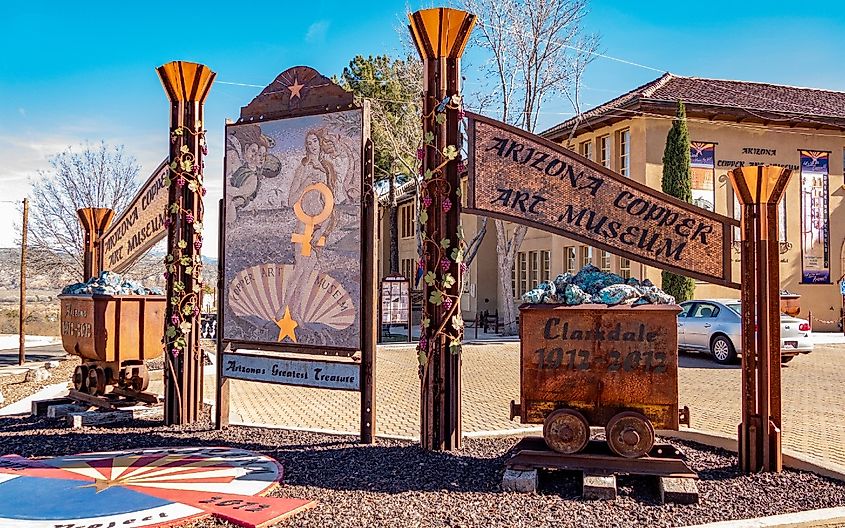
Clarkdale developed as a company town during Arizona’s mining boom, built to support nearby smelter operations in the early 20th century. Its layout follows a grid, planned for functionality rather than flair, and many of the original homes still stand.
Today, the town functions as a quiet hub between surrounding destinations, with its mix of history and small-scale tourism. The Arizona Copper Art Museum, housed in the old high school, documents copper’s role in both industry and art.
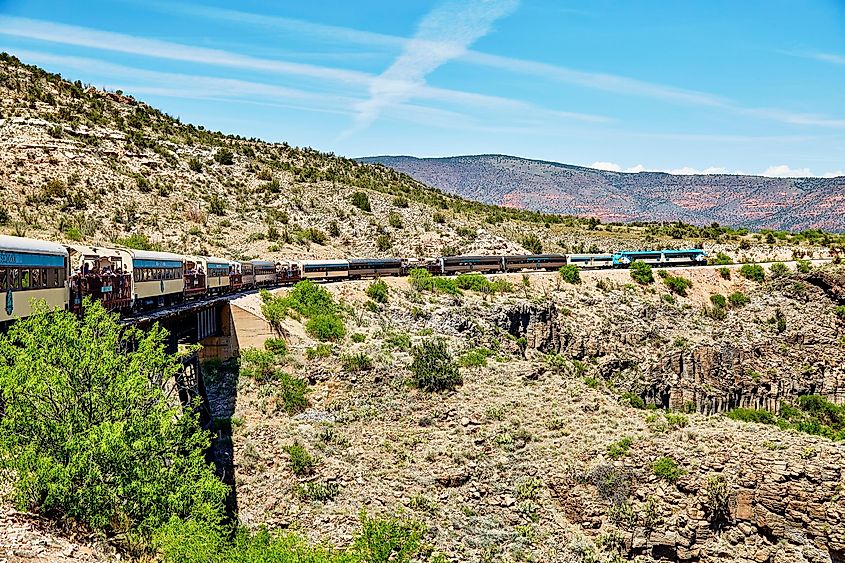
The Verde Canyon Railroad departs from the original depot, leading passengers through canyons and cliffs not visible by car. Outside the rail yard, Tuzigoot National Monument preserves a Sinagua pueblo atop a hill overlooking the Verde River. Locals fish and paddle along the riverbanks, or hike the trails that link Clarkdale to nearby Cottonwood and Sycamore Canyon.
Miami
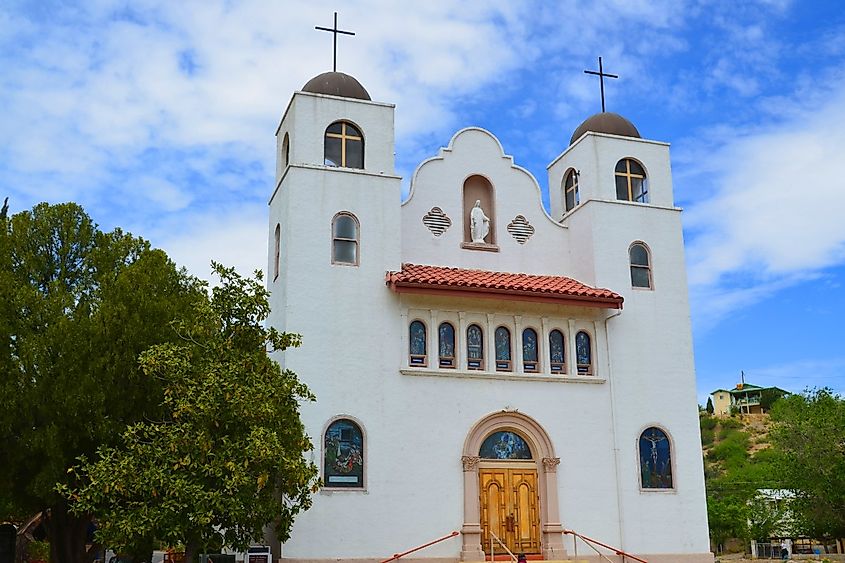
Tucked into the foothills of the Pinal Mountains, Miami is a quiet alternative to Arizona’s more tourist-driven towns. The walkable downtown, lined with early 20th-century storefronts, features antique dealers, diners, and local galleries that reflect the area’s evolving identity. Buildings along Sullivan Street show signs of renewal, with art studios and community projects filling former mercantile spaces.
The Bullion Plaza Cultural Center focuses less on mining and more on local heritage, spotlighting the town’s diverse cultural fabric. Outdoor access is easy, with nearby trails like Six-Shooter Canyon offering birdwatching and shaded forest hikes just minutes from town. In spring and fall, local markets and small festivals bring out a strong sense of community.
Whether exploring charming copper mining towns or immersing yourself in Arizona’s artistic revival, these towns offer a delightful mix of history, culture, and outdoor adventure. From hiking through scenic deserts to wandering through preserved historic streets, there is always something new to discover. So take the scenic route and enjoy these underrated treasures—they are waiting for you with open arms and a bit of copper history.
